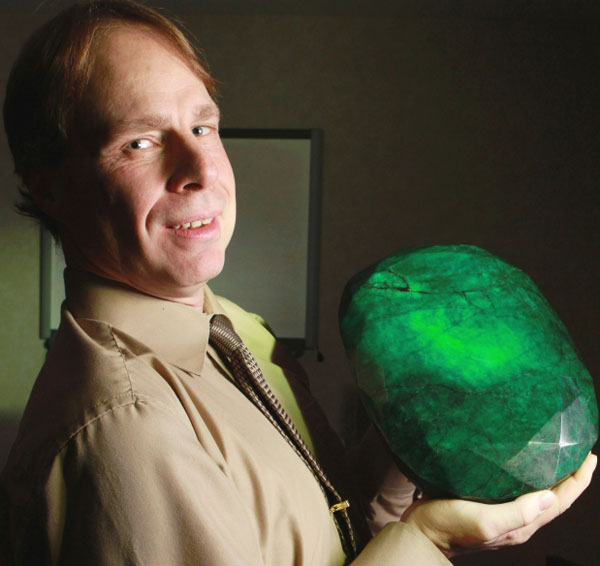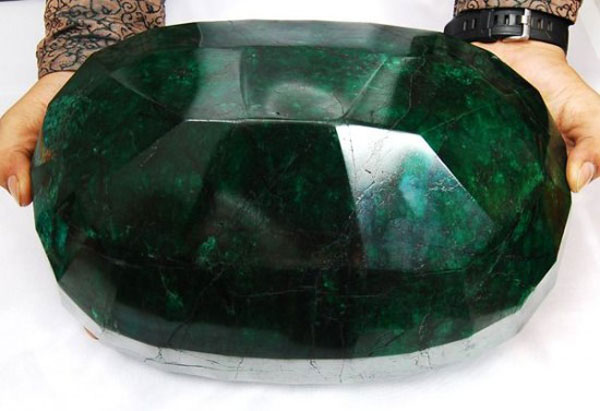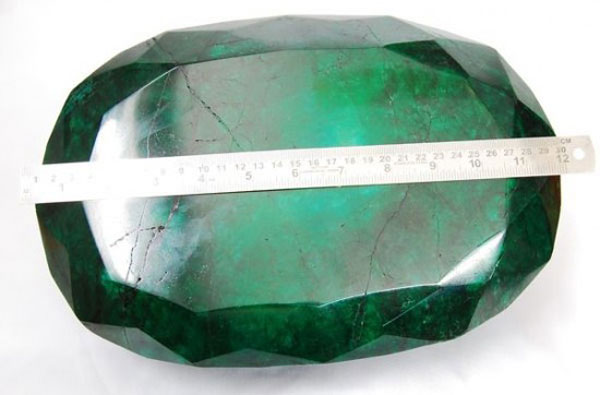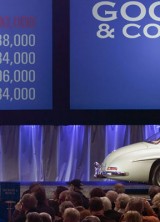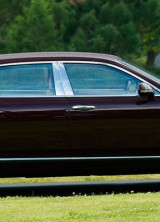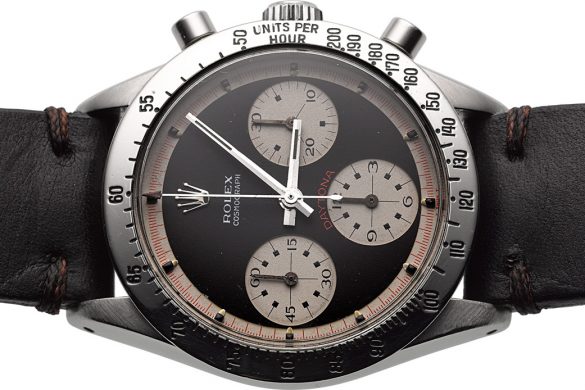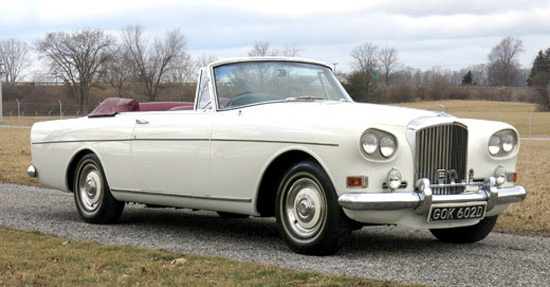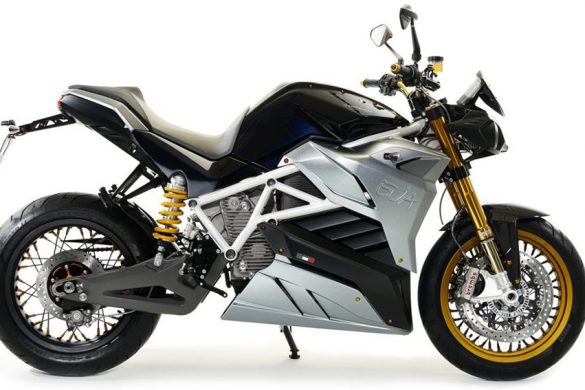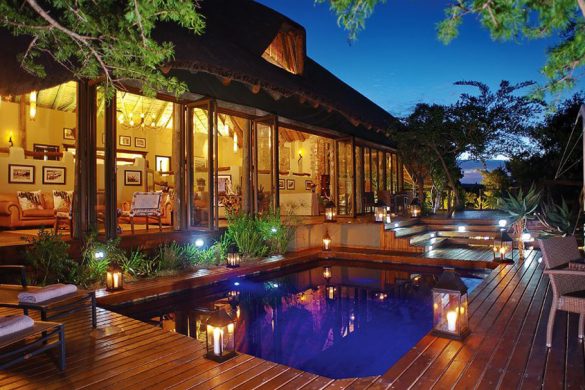The world’s largest cut emerald, weighing in at 57,500 carats and with an appraised value of $1.15 million will be sold on January 28 at Western Star Auctions in British Columbia, Canada. The jewel weighs 11.5 kilograms and is about 12 inches long. It’s so big it looks like a watermelon. Discovered in Brazil and cut in India, the gemstone named as Teodora (meaning God’s gift) was brought to Kelowna in BC under tight security. It is the fifth largest emerald ever found but the biggest that’s been cut with facets.
On Monday, the gem was appraised at $1.15 million, but Western Star Auctions owner, Mike Odenbach, believes it could fetch much more. It’s not unusual for gemstones to sell a lot higher than their appraised value, just depending on who wants to possess the largest emerald in the world. Really the sky’s the limit, he said.
The stone’s owner, a rare gems dealer from Calgary, Canada, Regan Reaney, said he purchased the stone from a dealer in India after a colleague there contacted him about it. After seeing some photos and having somebody in India verify it was the real deal, he purchased it through email. He refused to disclose the purchase price or the name of the dealer. Since its purchase, Reaney said a total of three gemologists have examined the stone and determined it is a treated emerald.
At first I was very skeptical, said Jeff Nechka, owner of Premier Gems. Anything this large occurring in nature is extremely rare. Nechka said he is aware of attempted fraud cases in the past where unscrupulous miners and dealers tried to combine several smaller stones into large pieces and pass them off as a massive, priceless gems.
Nechka said he conducted numerous tests to confirm the emerald’s authenticity. What made it difficult is the sheer size and weight, said Nechka. The gem instruments are quite delicate and fragile, so it took quite a bit of manoeuvring and special handling to go through the different tests to confirm it is, in fact, a genuine emerald.
Shane McClure, director of West Coast identification services for the Gemological Institute of America’s laboratory, said while he has not seen this particular gem in person, the GIA avoids classifying dyed beryl as a particular gemstone in all cases, whether, for example, they are dyed green and look like an emerald or dyed pink and resemble morganite.
If the GIA were to examine this gemstone and determine it was dyed, it would be noted on the grading report, along with this comment: The presence of dye prevents determining whether or not the stone would have sufficient depth of color to be considered emerald. He adds that the lab would only include this comment if it could determine there was some natural green coloration present. If such a thing came into the laboratory and we determined it was dyed, there was no way we would call it an emerald, he said. He recommends that whoever buys the stone obtain their own independent appraisal.
Another gemologist, Chris Dirken, told The Calgary Herald that he bought a 23,000-carat emerald that the GIA later determined was a piece of dyed white beryl from the same dealer who sold Reaney the 57,500-carat gem. He also said he saw the big emerald for sale on eBay shortly before Reaney purchased it. A stone like that, if it’s authentic, should be going to Christie’s or Sotheby’s, not a no-name auctioneer in B.C. with an appraisal from a gemologist who is relatively inexperienced, said Dirken, who said he’s been buying gems for 20 years and works in the mining industry.
For his part, Reaney is standing by his massive emerald, dismissing the statements of both the GIA and the other gemologist, whom he said is just jealous he didn’t snatch up the stone. It is an emerald, 100 percent. They are welcome to fly up here and analyze it themselves, he said of the GIA.

